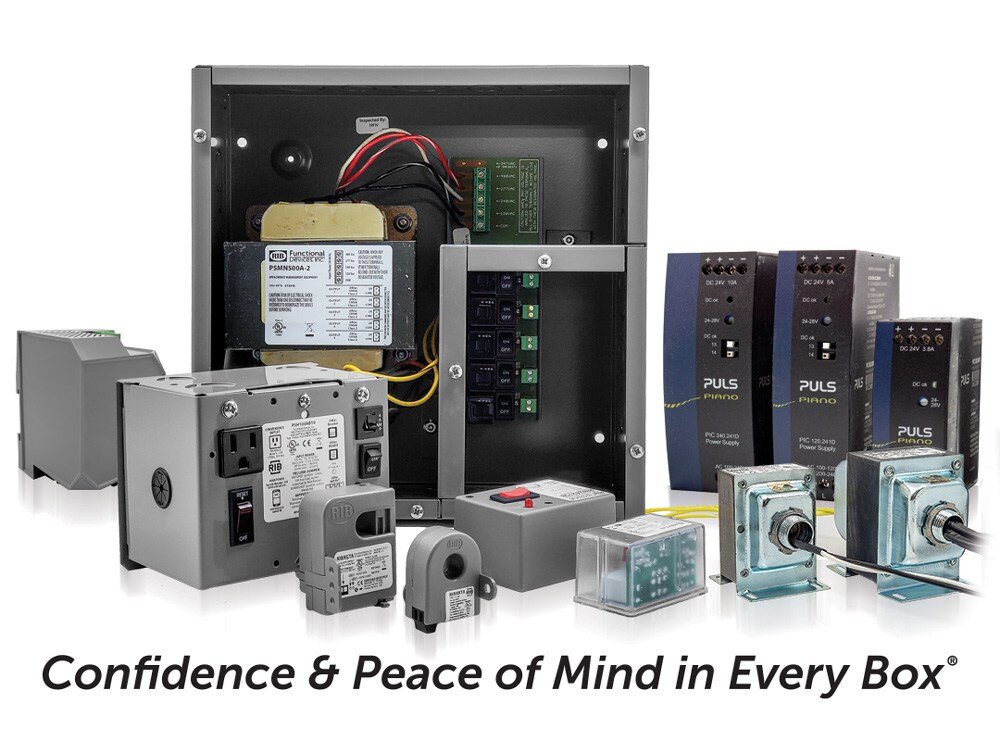Energy Efficiency & Sustainability in Lighting Controls
If you want to make your commercial lighting controls as efficient as possible, you can’t just change all the fluorescent bulbs to LED and call it a day. While that’s part of it, sustainability and energy efficiency efforts must span the entire system, including the component level. What do we mean by components? Devices like relays, controllers, and sensors!
Choosing the right relays and other lighting controls for optimal efficiency boasts a variety of benefits. Let’s explore them and how component-level optimization contributes to energy savings and environmental goals.
At Functional Devices, we promote sustainability without compromising the productivity of our devices. Our cutting-edge sensor and control technology redefine commercial building efficiency. Switching to our devices can help you save up to 29 percent in energy consumption! Explore our line of lighting controls to learn more.
Why Energy Efficiency Matters in Lighting Controls

After HVAC systems, lighting controls and ventilation are the next most significant sources of energy consumption in commercial buildings. Therefore, reducing the amount of energy used by all lighting components is essential for many reasons:
- Lower utility costs and improved bottom line
- Component and system longevity
- Reduced maintenance and enhanced safety
- Better for the planet and long-term operation
- Improved occupancy comfort
- Steps toward meeting corporate sustainability goals and certifications
With lower costs and better outcomes, working to implement energy efficiency at all levels of your lighting controls is a no-brainer.
The Power of Component-Level Optimization
By now, you know that efficiency isn’t just about LED bulbs or modern fixtures (although they play an important role). Energy efficiency efforts must reach the foundational component level. Relays, sensors, and controls influence power usage and lighting behavior, ultimately determining the overall performance and efficiency of the entire system.
Think of it this way: plants need soil, sunshine, and water to grow. Those are the basic components. Sure, you can feed the plant fancy fertilizers, prune it seasonally, and treat it for pests, but if you don’t have the basics covered, then the plant’s not going to grow very well (or at all). It’s the same when approaching your lighting controls' overall health and efficiency. Make sure the individual components—your soil, sunshine, and water—are in order.
Benefits of Component-Level Energy Efficiency
We’ve touched on the general advantages of energy efficiency in lighting controls, but now let’s dive deeper into how the right relays, sensors, and controls enable processes that drive sustainability.
Reducing Energy Waste and Enhancing Performance
When you make a system more efficient, it performs better. When it comes to lighting, that means implementing:
- Daylight harvesting. Lights adjust automatically in response to the amount of available natural light.
- Occupancy-based controls. Lights turn on and off in response to human presence.
- Smart devices. Lights adapt to match real-time needs, enhancing energy savings and performance even more.
Functional daylight harvesting and occupancy-based controls depend on specific devices, mainly daylight sensors, occupancy sensors, controllers, and a centralized lighting management board. Additionally, you’ll need a wireless communication protocol if you plan to go smart (think Wi-Fi, Bluetooth, etc.).
Extending Lifecycle and Optimizing Maintenance
Component-level energy efficiency extends the lifecycle and reduces maintenance of the components and lighting system. Devices will need fewer repairs or replacements, which means lower maintenance costs and improved system reliability.
Moreover, with its real-time data, a smart system will optimize maintenance schedules automatically, saving you time and effort. Instead of manually scheduling maintenance checks, a smart system can automatically schedule system checks based on usage patterns or collected data.
Smart relays will switch only when necessary, reducing wear and tear on fixtures. Smart occupancy sensors can adjust the time delay (when a room empties and when the lights cycle off) based on occupancy patterns, optimizing energy usage and device lifespan.
Supporting LEED and Other Green Building Goals
Finally, installing energy-efficient components can help you meet your sustainability goals, such as LEED certification, the most common green building rating system worldwide.
To earn certification, your building must satisfy particular prerequisites before earning points from a menu of credit options (e.g., Energy and Atmosphere, Indoor Environmental Quality). Specific relays, sensors, and controls can earn LEED points, playing a pivotal role in enhancing performance and efficiency and becoming certified.
Efficient components will help you meet other green benchmarks, like the WELL Building Standard and BREEAM.
Ensure Energy Efficiency with Relays from Functional Devices
Every relay, sensor, and control matters when building a green lighting system with component-level decisions impacting overall sustainability. Is it time to upgrade your devices to something more energy efficient? You have the potential to save yourself money and time and reduce your energy burden on the planet. It’s a win-win!
Join the many other facility managers and wholesalers working to reduce their carbon footprint with Functional Devices’ efficient components. We’re aiming for a 72 to 133 million metric ton reduction in carbon by 2030! It’s time to turn the sustainability switch to “on” with efficient lighting controls. If you have any questions, please reach out. We’d be happy to help.
About Functional Devices, Inc.

Leaders in the Industry
The world was a very different place in 1969, when Functional Devices, Inc. was founded by engineer and electronics enthusiast Albert Rittmann, but our commitment to evolution and versatility has allowed us to remain a key player in the building automation and lighting controls industry for over 55 years.
Today, as we embrace emerging technology and lean into the future of building automation, our products are still manufactured in the USA with global materials, and we are still committed to our mission of enhancing lives in buildings and beyond. Back in 1969, Albert could never have predicted the technological advances we live with today, but with the groundwork he laid and the vision of his successors, Functional Devices has adapted and grown into a company that can handle anything.
